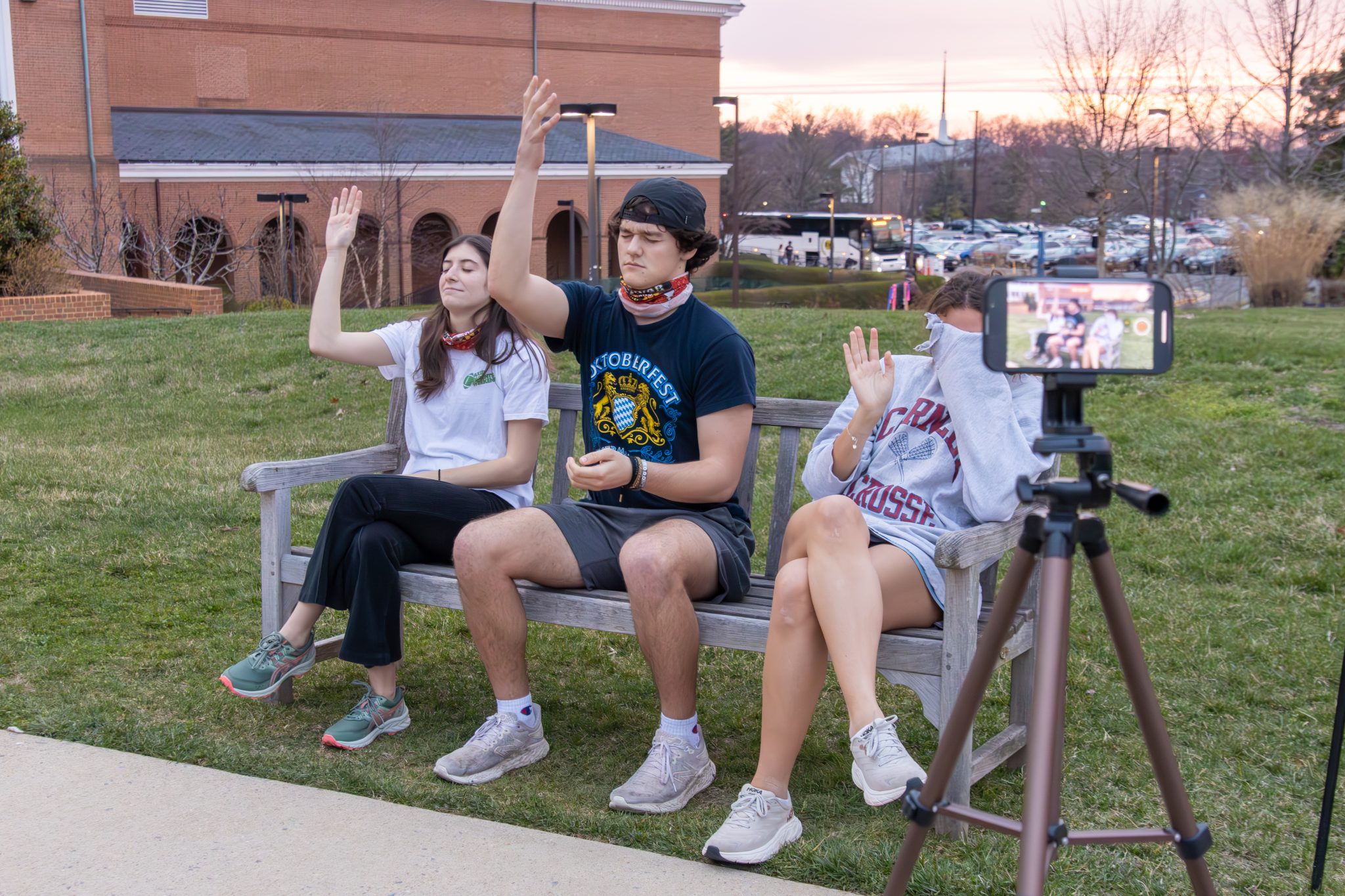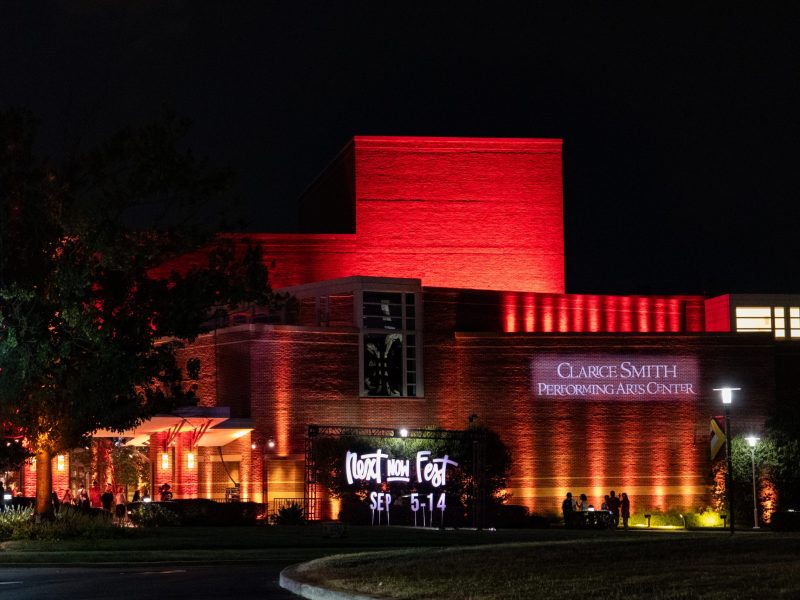Beneath the fluorescent lights of an after-hours Tawes Hall classroom, a group of University of Maryland students — their leader with a tiki torch in hand — enter for Survivor Maryland’s tribal council.
Though the students smile and joke with each other, the weight of their decision looms. The team, referred to as a tribe, must eliminate one friend, ally and teammate from the game.
These recognizable tribal councils are only a small fraction of the massive production that is Survivor Maryland.
“There are three factions to Survivor Maryland. Its crew, players and [executive board]. Players are the centerpiece of our club,” said junior English major and the 80-person organization’s co-president Madeline Arcaro.
Students who sign up to play complete random and occasionally demanding challenges, such as holding onto the poles at Xfinity Center for as long as possible or wrestling each other to bring a tire to their side of a field.
Players also perform tasks throughout campus in “taskmasters” — such as sending emails asking for the best date spots in College Park — to push each other out of their comfort zones.
The film crew records each council, challenge, 45-minute confessional session and interaction between the players during the season, equipping at least three cameras at all times.
[Dylan Sprouse brings off-kilter charm, wisdom to surprise SEE Q&A]
Every conversation each person has in the game is recorded, Arcaro said.
By the end of one season, the crew amasses thousands of hours of footage. Despite the club’s 22–season run, only seasons two through seven are uploaded to its YouTube channel.
“All the footage goes to the host and the hosts edit their own seasons,” Arcaro said. “Editing it takes years and years. The season that’s currently airing [on YouTube] was filmed all the way back in 2017.”
The executive board manages recruitment and develops the season. Members such as sophomore journalism major and head of twists Jack Wynn keep the challenges exciting.
Wynn, a self-proclaimed Survivor fan, develops the unexpected portion of the game including hidden advantages, immunity idols and possible shocking alliances. He came in sixth place as a player last season.
Wynn said that while the game can be misconstrued as a social experiment, playing successfully depends more on the relationships players make.
With challenges that reach nearly 15 hours, it’s difficult to not grow close with other players.
In a season 20 challenge, players held onto the McKeldin sundial for as long as possible. This activity lasted 14 hours and 56 minutes, breaking the record for the longest challenge in college Survivor’s history, Arcaro said.
[Celebrate Women’s History Month with these 6 empowering anthems]
Despite the demanding schedule, with executive board members sometimes working 40 hours a week, past competitors such as Wynn and Arcaro return to help edit, recruit or plan the next seasons.
Community recruitment head Malik Oumarou placed second during his season, and said he enjoyed how the game compelled him to try new activities.
“[It’s] a weird way to put myself out there, out of my comfort zone with a bunch of people I would never interact with naturally,” the junior information science major said. “All the people that you play with really become such a tight knit family.”
As a player, Oumarou enjoyed completing and watching the taskmasters, reminiscing on challenges like sledding down Stamp Hill with an egg in one’s mouth — or dancing in a conga line with 10 strangers.
Although the game presents itself as a fun weekly activity and social club, people grow into wanting to prove themselves as competitors, Oumarou said.
“The club just consumes everyone who gets into it. It’s why everyone from our season keeps coming back just to watch the new people have their experience or to be in an exec position.” Oumarou said.
In the three years since last season aired on YouTube, Arcaro said Survivor Maryland has slowly regained its presence on campus through noticeable tasks and challenges, but the organization also prides itself on fostering a sense of community — one that extends beyond this university.
This university’s Survivor is the first edition of any college Survivor. In its footsteps came other survivor clubs who reached out to Survivor Maryland for advice on starting their chapters.
The colleges have built an extensive network of alumni and current players from schools including Northeastern University, University of Connecticut and University of Michigan.
Arcaro said she’s proud of the community Survivor Maryland has built, and for fulfilling her own mission to diversify the club further as one of the few women to host.
“The fact that I feel like I’ve made a lot of changes in the two years that I’ve been here, I’ve been really, really proud of,” Arcaro said. “I’m excited to see just the way that continues to grow even after I graduate.”



